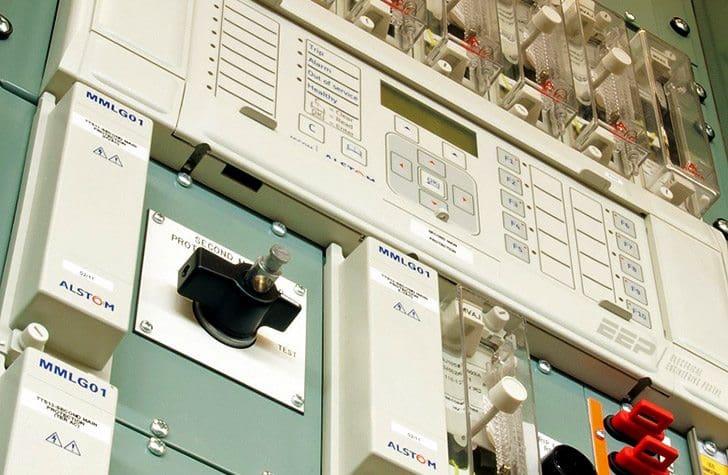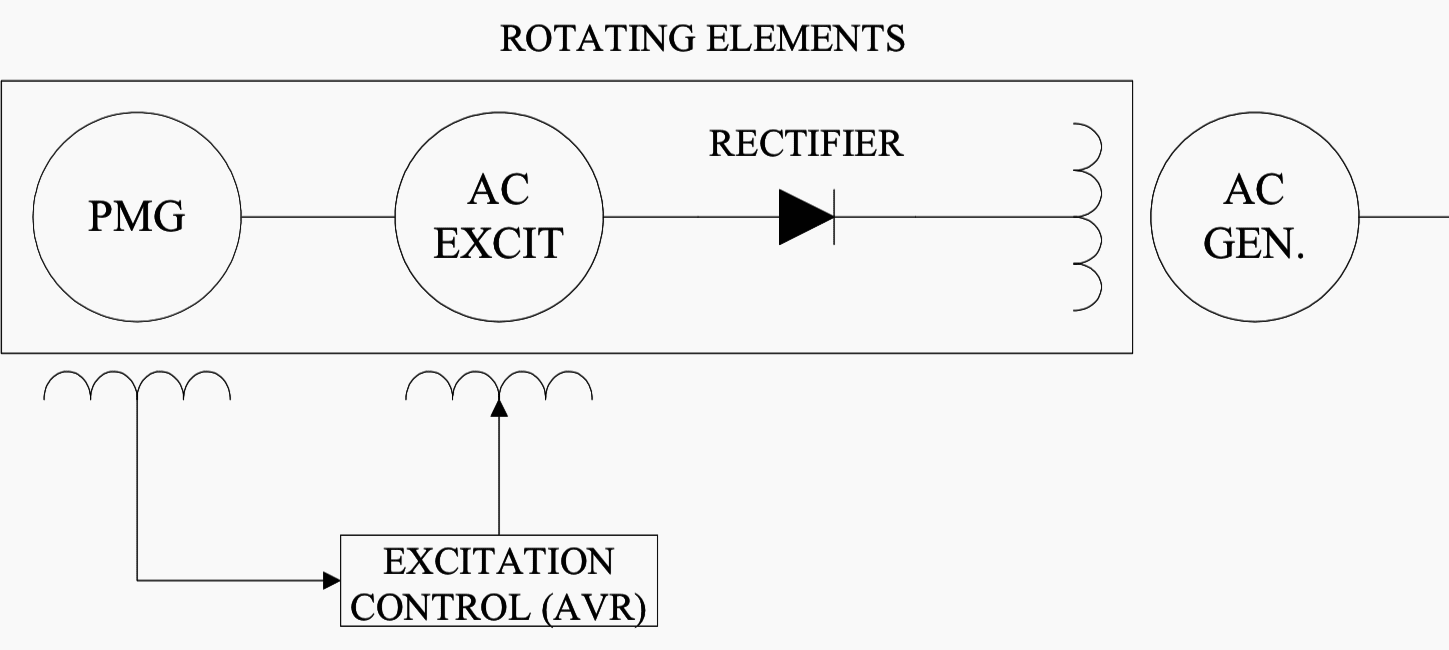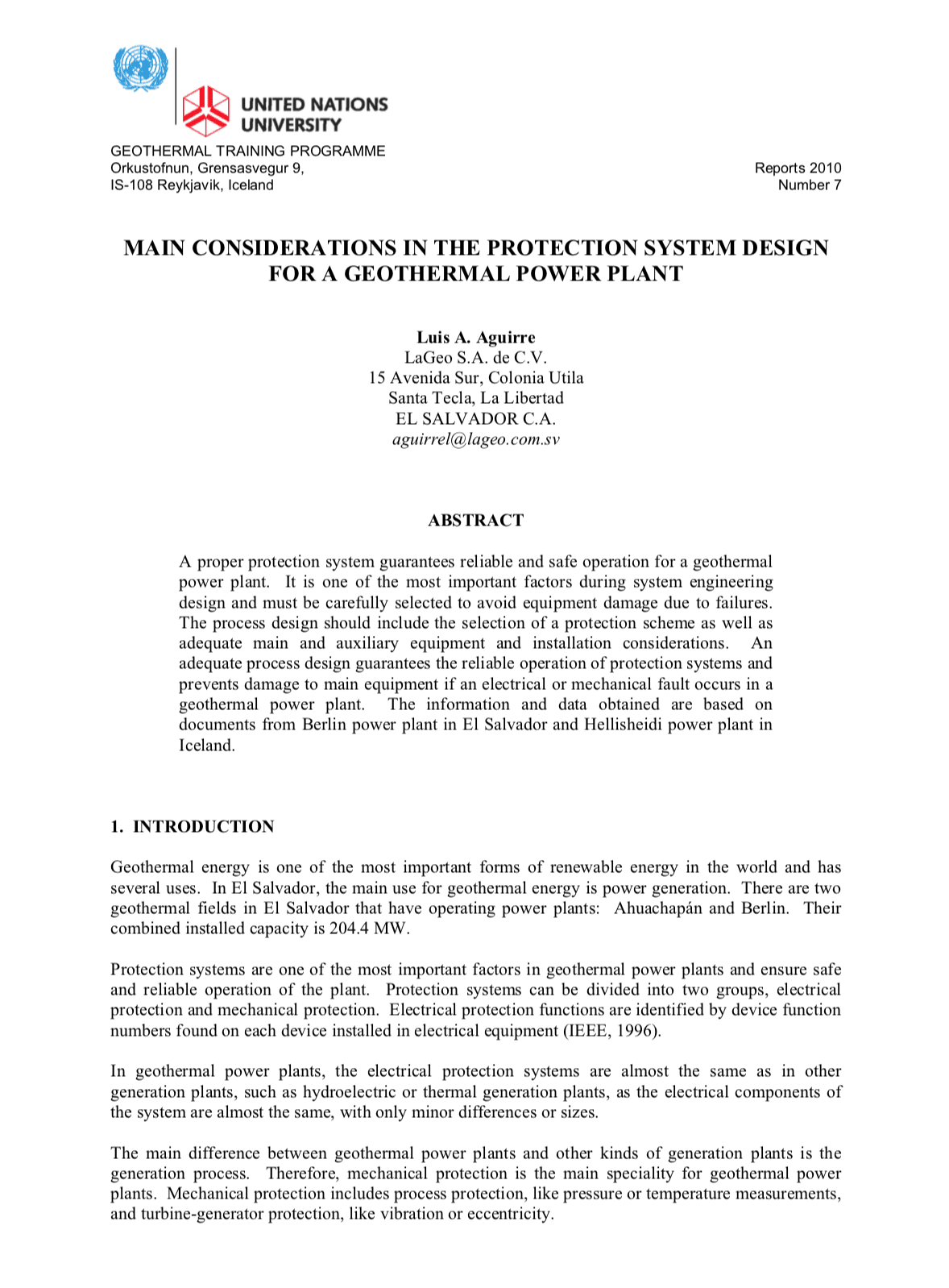Generator protection description
In the power plant, the generator is one of the most expensive pieces of equipment and electrical faults MUST be identified and cleared in due time. Synchronous generator protection requires consideration of harmful abnormal operating conditions more than that of any other power system element.

A simplified functionality of a synchronous generator can be described as follows:
An electromagnetic field is developed by circulating direct current through loops of wire wound around stacks of magnetic steel laminations. These are called field poles, and they are mounted on the perimeter of the rotor. The rotor is attached to the turbine shaft, and rotates at a fixed speed.
When the rotor turns, it causes the field poles (the electromagnets) to rotate and move past the conductors mounted in the stator.
This, in turn, causes a voltage to be induced in the generator stator windings that are connected to the output terminals (Faraday’s law of induction).
Generator grounding
It is common practice to ground all types of generators through some form of external impedance.
The purpose of this grounding is to limit the thermal and mechanical stresses and fault damage in the machine, to limit transient overvoltages during faults and to provide a means for detecting ground faults within the machine.
In some cases, the distribution transformer is omitted and a resistance of high value is connected directly between the generator neutral and ground. The resistor size is selected to limit ground-fault current to the range of 3-25 A.
While this method of grounding is commonly used in Europe, the physical size of the resistors, the required resistor insulation level and the cost may preclude its use.

Excitation system
The most common excitation system used in geothermal power plants is the alternator rectifier exciter and rotating rectifiers (brushless exciter).
Figure 1 shows an excitation system that uses an alternator, but by mounting the DC field winding on the stator of the exciter and the AC armature winding on the rotor, all brushes and commutators have been eliminated.
In this system, the AC armature of the exciter, the rotating three-phase diode bridge rectifier, and the main field of the AC generator are all mounted on the same rotating shaft system. All electrical connections are made along or through the centre of this shaft.
| Title: | Protection System Design For a Geothermal Power Plant (Main Considerations) – Luis A. Aguirre, LaGeo S.A. de C.V. (United Nations University) |
| Format: | |
| Size: | 2.6 MB |
| Pages: | 26 |
| Download: | Right here | Video Courses | Membership | Download Updates |



Good. Thank you
Thanks for sharing. Well done.
Well done and informative. Thank you